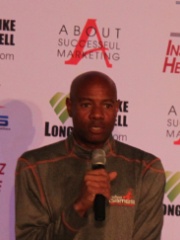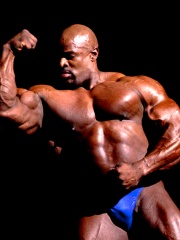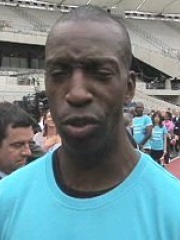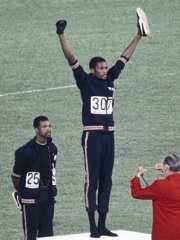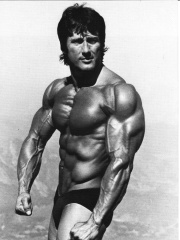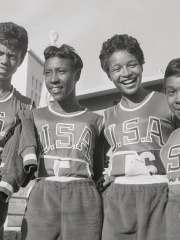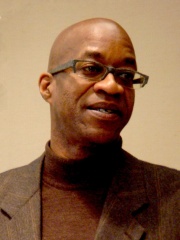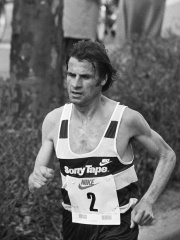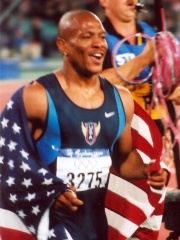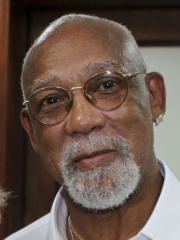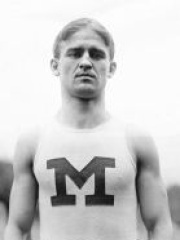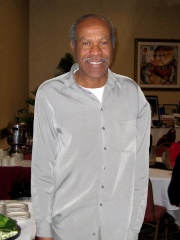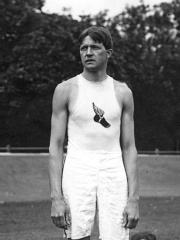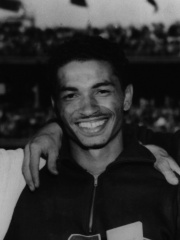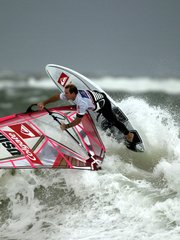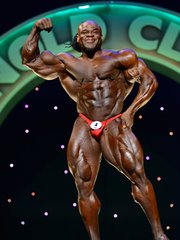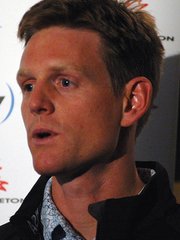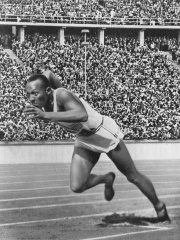
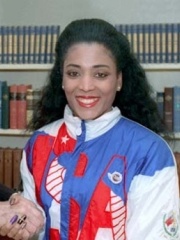
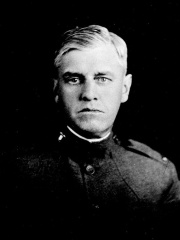
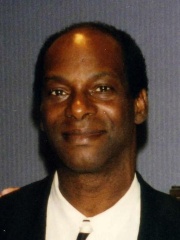
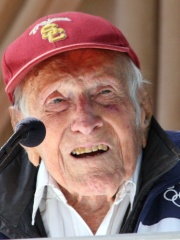
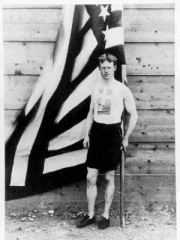
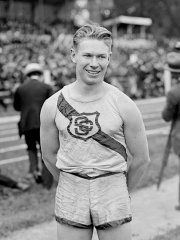
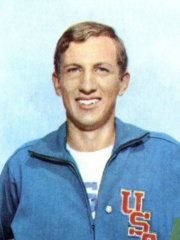
The Most Famous
ATHLETES from United States
This page contains a list of the greatest American Athletes. The pantheon dataset contains 6,025 Athletes, 1,498 of which were born in United States. This makes United States the birth place of the most number of Athletes.
Top 10
The following people are considered by Pantheon to be the top 10 most legendary American Athletes of all time. This list of famous American Athletes is sorted by HPI (Historical Popularity Index), a metric that aggregates information on a biography's online popularity. Visit the rankings page to view the entire list of American Athletes.

1. Jesse Owens (1913 - 1980)
With an HPI of 75.19, Jesse Owens is the most famous American Athlete. His biography has been translated into 85 different languages on wikipedia.
James Cleveland "Jesse" Owens (September 12, 1913 – March 31, 1980) was an American track and field athlete who made history at the 1936 Olympic Games by winning four gold medals, setting Olympic records in each event. He is widely regarded as one of the greatest athletes in track and field history. Owens excelled in events like short sprints and the long jump and was recognized in his lifetime as "perhaps the greatest and most famous athlete in track and field history". He won four events, set five world records and tied another—all in less than an hour, at the 1935 Big Ten Championships in Ann Arbor, Michigan, a feat that has never been equaled and has been called "the greatest 45 minutes ever in sport". He won four NCAA titles in both 1935 and 1936, bringing his total to eight—an unparalleled achievement that remains unmatched to this day. He achieved international fame at the 1936 Summer Olympics in Berlin, Germany, by winning four gold medals: 100 meters, long jump, 200 meters, and 4 × 100-meter relay. He was the most successful athlete at the Games and, as a black American man, was credited by ESPN with "single-handedly crushing Hitler's myth of Aryan supremacy". The Jesse Owens Award is USA Track & Field's highest accolade for the year's best track and field athlete. In a 1950 Associated Press poll, Owens was voted the greatest track and field athlete for the first half of the century. In 1999, he was on the six-man short-list for the BBC's Sports Personality of the Century. That same year, he was ranked the sixth greatest North American athlete of the twentieth century and the highest-ranked in his sport by ESPN.

2. Florence Griffith Joyner (1959 - 1998)
With an HPI of 71.53, Florence Griffith Joyner is the 2nd most famous American Athlete. Her biography has been translated into 54 different languages.
Florence Delorez Griffith Joyner (née Griffith; December 21, 1959 – September 21, 1998), also known as Flo-Jo, was an American track and field athlete and the fastest woman ever recorded, setting world records in the 100m and 200m in 1988. She was married to Al Joyner, a 1984 Olympic gold medalist in the triple jump. He was also her coach and husband during her success as a four-time Olympic medalist. During the late 1980s, she became a popular figure due to both her record-setting athleticism and eclectic personal style. Griffith Joyner was born and raised in California. She was athletic from a young age and began running at track meets as a child. While attending California State University, Northridge (CSUN), and the University of California, Los Angeles (UCLA), she continued to compete in track and field. While still in college, she qualified for the 100 m 1980 Olympics but did not compete due to the U.S. boycott. She made her Olympic debut four years later, winning a silver medal in the 200-meter distance at the 1984 Olympics in Los Angeles. At the 1988 U.S. Olympic trials, Griffith set a new world record in the 100-meter sprint. She won three gold medals at the 1988 Olympics. In February 1989, Griffith Joyner abruptly retired from athletics. She remained a pop culture figure through endorsement deals, acting, and designing. In 1998, at age 38, she died in her sleep during an epileptic seizure caused by a birth defect. Griffith Joyner is buried at the El Toro Memorial Park in Lake Forest.

3. Thomas Burke (1875 - 1929)
With an HPI of 71.09, Thomas Burke is the 3rd most famous American Athlete. His biography has been translated into 39 different languages.
Thomas Edmund Burke (January 15, 1875 – February 14, 1929) was an American sprinter. He was the first Olympic champion in the 100 and 400 meter sprint races.

4. Bob Beamon (b. 1946)
With an HPI of 69.98, Bob Beamon is the 4th most famous American Athlete. His biography has been translated into 50 different languages.
Robert Beamon (born August 29, 1946) is an American former track and field athlete, best known for his world record in the long jump at the Mexico City Olympics in 1968. By jumping 8.90 m (29 ft 2+1⁄4 in), he broke the existing record by a margin of 55 cm (21+3⁄4 in) and his world record stood for almost 23 years until it was broken in 1991 by Mike Powell. The jump is still the Olympic record and the second-longest in history unassisted by wind.
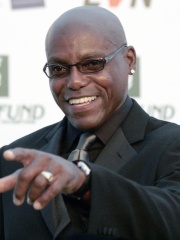
5. Carl Lewis (b. 1961)
With an HPI of 67.90, Carl Lewis is the 5th most famous American Athlete. His biography has been translated into 73 different languages.
Frederick Carlton Lewis (born July 1, 1961) is an American former track and field athlete who won nine Olympic gold medals, one Olympic silver medal, and 10 World Championships medals, including eight gold. Lewis was a dominant sprinter and long jumper whose career spanned from 1979 to 1996, when he last won the Olympic long jump. He is one of six athletes to win gold in the same individual event in four consecutive Olympic Games, and is one of two people to win gold in the same individual athletics event in four Olympic Games, along with USA discus thrower Al Oerter. He is the head track and field coach for the University of Houston. Lewis topped the world rankings in the 100 m, 200 m and long jump events frequently from 1981 to the early 1990s. He set world records in the 100 m, 4 × 100 m and 4 × 200 m relays, while his world record in the indoor long jump has stood since 1984. His 65 consecutive victories in the long jump over a span of ten years is one of the sport's longest undefeated streaks. Lewis broke 10 seconds for the 100 meters fifteen times and 20 seconds for the 200 meters ten times. He also long jumped over 8.53 metres (28 ft) 71 times. His accomplishments have led to numerous accolades, including being voted "World Athlete of the Century" by the International Association of Athletics Federations, "Sportsman of the Century" by the International Olympic Committee, "Olympian of the Century" by Sports Illustrated and "Athlete of the Year" by Track & Field News in 1982, 1983, and 1984. After retiring from athletics, Lewis became an actor and has appeared in a number of films. In 2011, he attempted to run for a seat as a Democrat in the New Jersey Senate, but was removed from the ballot due to the state's residency requirement. Lewis owns a marketing and branding company named C.L.E.G., which markets and brands products and services, including his own.

6. Louis Zamperini (1917 - 2014)
With an HPI of 67.42, Louis Zamperini is the 6th most famous American Athlete. His biography has been translated into 27 different languages.
Louis Silvie Zamperini (January 26, 1917 – July 2, 2014) was an American World War II veteran, an Olympic distance runner and a Christian evangelist. He took up running in high school and qualified for the United States in the 5,000 m race for the 1936 Berlin Olympics, finishing 8th while setting a new lap record in the process. Zamperini was commissioned in the United States Army Air Forces as a lieutenant. He served as a bombardier on B-24 Liberators in the Pacific. On a search and rescue mission, his plane experienced mechanical difficulties and crashed into the ocean. After drifting at sea on a life raft for 47 days, with two other crewmates, Zamperini landed on the then Japanese Marshall Islands and was captured. He was taken to a total of four different prisoner-of-war camps in Japan, where he was tortured and beaten by Japanese military personnel—specifically including Mutsuhiro Watanabe—because of Zamperini's status as a famous Olympic runner. He was later taken to a new prison camp at a coal factory, and after much hardship, he was finally released. Following the war he initially struggled to overcome his ordeal, afflicted with post-traumatic stress disorder and alcoholism. He later became a Christian evangelist with a strong belief in forgiveness. From 1952 onwards, he devoted himself to at-risk youth. Zamperini is the subject of three biographical films: Unbroken (2014), its sequel Unbroken: Path to Redemption (2018), and Captured by Grace (2015).

7. Thomas Curtis (1873 - 1944)
With an HPI of 67.38, Thomas Curtis is the 7th most famous American Athlete. His biography has been translated into 29 different languages.
Thomas Pelham Curtis (January 9, 1873 – May 23, 1944) was an American athlete and the winner of the 110 metres hurdles at the 1896 Summer Olympics. Curtis, a Massachusetts Institute of Technology student of electrical engineering, travelled to Athens as a member of the Boston Athletic Association. Curtis was also a student at Columbia University. At the first day of the first modern Olympic Games, Curtis advanced to the 100 metres final by winning his heat with a time of 12.2 seconds. He later withdrew from that race to prepare for the 110 metres hurdles final, which was his main event at the Olympics. That competition turned into a personal race between Curtis and Grantley Goulding from Great Britain after Frantz Reichel and William Welles Hoyt withdrew. At the start Curtis gained a small lead, but Goulding reached him at the first hurdle. At the last hurdle, Goulding was leading, but Curtis managed to throw himself to the line first. The officials stated that Curtis had won by 5 centimetres. Both athletes had a time of 17.6 seconds. As an eager amateur photographer, Curtis made many valuable pictures in Athens. He did serve as captain in the Massachusetts National Guard and acted as a military aide to Massachusetts Governor Calvin Coolidge during World War I. His service reflected both military commitment and a connection to prominent political figures of the time. He also participated in the development of the toaster and published several humorous memories about the first modern Olympic Games. The most famous of them is High Hurdles and White Gloves (1932).

8. Charley Paddock (1900 - 1943)
With an HPI of 67.37, Charley Paddock is the 8th most famous American Athlete. His biography has been translated into 27 different languages.
Charles William Paddock (August 11, 1900 – July 21, 1943) was an American athlete and two-time Olympic champion.

9. Dick Fosbury (1947 - 2023)
With an HPI of 67.24, Dick Fosbury is the 9th most famous American Athlete. His biography has been translated into 41 different languages.
Richard Douglas Fosbury (March 6, 1947 – March 12, 2023) was an American high jumper, who is considered one of the most influential athletes in the history of track and field. He won a gold medal at the 1968 Summer Olympics, revolutionizing the high jump event with a "back-first" technique now known as the Fosbury flop. His method was to sprint diagonally towards the bar, then curve and leap backward over it, which gave him a much lower center of mass in flight than traditional techniques. Debbie Brill was developing her similar "Brill Bend" around the same time. This approach has seen nearly universal adoption since Fosbury's performance in Mexico. Though he never returned to the Olympics, Fosbury continued to be involved in athletics after retirement and served on the executive board of the World Olympians Association. In 2014, Fosbury challenged Steve Miller for a seat in the Idaho House of Representatives, but was unsuccessful. Fosbury ran for Blaine County Commissioner against incumbent Larry Schoen in 2018, won the seat, and took office in 2019.
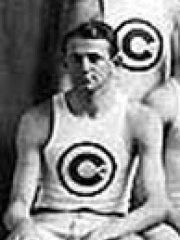
10. Frank Jarvis (1878 - 1933)
With an HPI of 67.10, Frank Jarvis is the 10th most famous American Athlete. His biography has been translated into 31 different languages.
Frank Washington Jarvis (August 31, 1878 in California, Pennsylvania – June 2, 1933 in Sewickley, Pennsylvania) was an American sprinter, the 1900 Olympic 100 m champion, and a triple jumper.
People
Pantheon has 1,498 people classified as American athletes born between 1751 and 2006. Of these 1,498, 1,108 (73.97%) of them are still alive today. The most famous living American athletes include Bob Beamon, Carl Lewis, and Mike Powell. The most famous deceased American athletes include Jesse Owens, Florence Griffith Joyner, and Thomas Burke. As of April 2024, 131 new American athletes have been added to Pantheon including Robby Naish, Jonathan Smith, and Shyril O'Steen.
Living American Athletes
Go to all RankingsBob Beamon
1946 - Present
HPI: 69.98
Carl Lewis
1961 - Present
HPI: 67.90
Mike Powell
1963 - Present
HPI: 66.86
Ronnie Coleman
1964 - Present
HPI: 66.70
Michael Johnson
1967 - Present
HPI: 65.77
Tommie Smith
1944 - Present
HPI: 62.65
Frank Zane
1942 - Present
HPI: 62.37
Barbara Jones
1937 - Present
HPI: 61.55
Edwin Moses
1955 - Present
HPI: 60.77
Carlos Lopes
1947 - Present
HPI: 60.33
Maurice Greene
1974 - Present
HPI: 59.55
John Carlos
1945 - Present
HPI: 59.40
Deceased American Athletes
Go to all RankingsJesse Owens
1913 - 1980
HPI: 75.19
Florence Griffith Joyner
1959 - 1998
HPI: 71.53
Thomas Burke
1875 - 1929
HPI: 71.09
Louis Zamperini
1917 - 2014
HPI: 67.42
Thomas Curtis
1873 - 1944
HPI: 67.38
Charley Paddock
1900 - 1943
HPI: 67.37
Dick Fosbury
1947 - 2023
HPI: 67.24
Frank Jarvis
1878 - 1933
HPI: 67.10
Archie Hahn
1880 - 1955
HPI: 66.80
Lee Evans
1947 - 2021
HPI: 66.69
Ray Ewry
1873 - 1937
HPI: 65.71
Greg Bell
1930 - 2025
HPI: 65.46
Newly Added American Athletes (2025)
Go to all RankingsRobby Naish
1963 - Present
HPI: 52.27
Jonathan Smith
1961 - Present
HPI: 46.58
Shyril O'Steen
1960 - Present
HPI: 45.74
Kai Greene
1975 - Present
HPI: 45.25
Alan Forney
1960 - Present
HPI: 45.07
Betsy Beard
1961 - Present
HPI: 44.77
Jay Barrs
1962 - Present
HPI: 44.70
Kristen Thorsness
1960 - Present
HPI: 44.62
Norman Bellingham
1964 - Present
HPI: 44.41
Kelly McCormick
1960 - Present
HPI: 43.85
Jeffrey McLaughlin
1965 - Present
HPI: 43.75
Jeff Pain
1970 - Present
HPI: 42.65
Overlapping Lives
Which Athletes were alive at the same time? This visualization shows the lifespans of the 25 most globally memorable Athletes since 1700.

